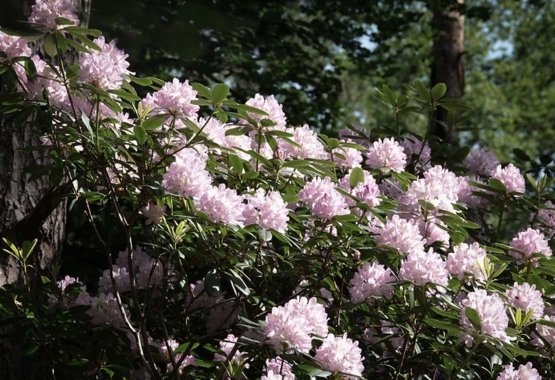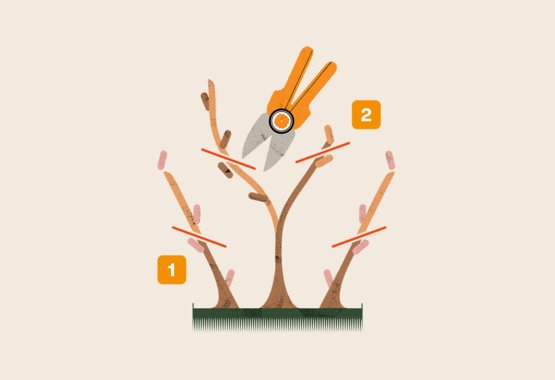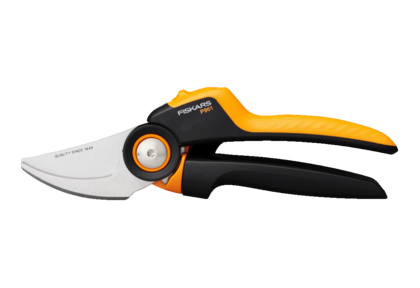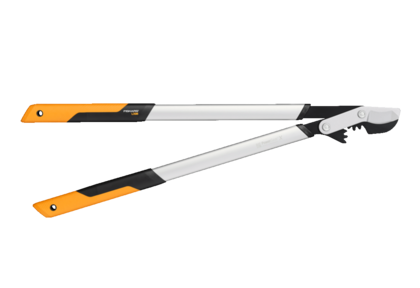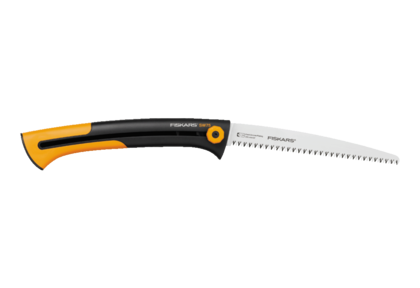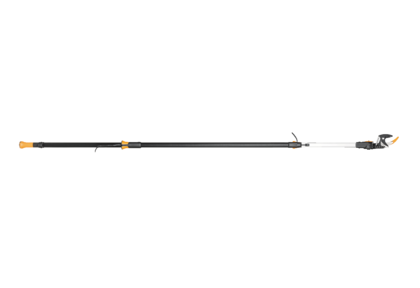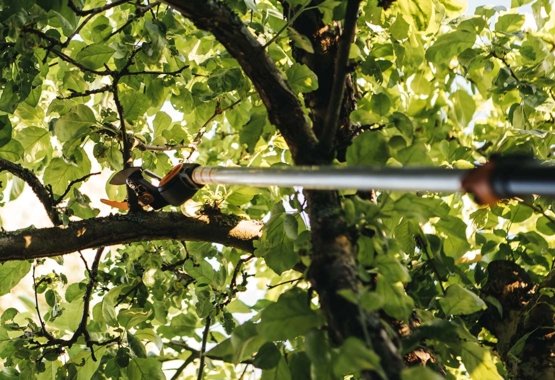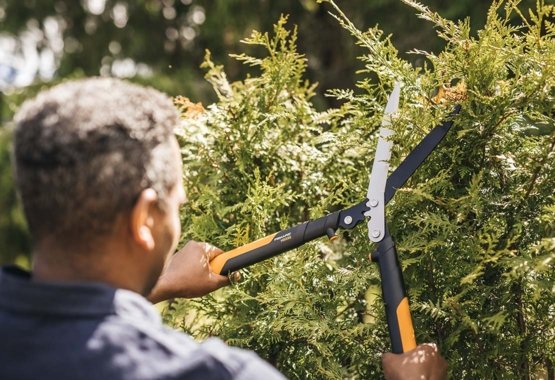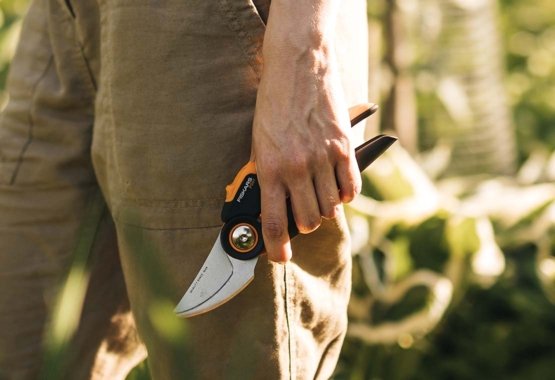
Pruning deciduous shrubs and hedges
Deciduous shrubs and hedges are usually pruned in the spring before the beginning of the growth season. In addition, hedges are often trimmed to keep them in the wanted shape and to limit their growth.
Pruning deciduous shrubs and hedges
Deciduous shrubs and hedges are usually pruned in the spring before the beginning of the growth season. In addition, hedges are often trimmed to keep them in the wanted shape and to limit their growth.
How and when to prune deciduous shrubs?
Deciduous shrubs are usually pruned in the spring before the beginning of the growth season. Prune any branches that are damaged or growing along the ground and a few of the oldest shoots down to their bases. Old shoots can be recognized by their thicker stems, small number of leaves, dark color and scaly bark. This type of thinning keeps the shrubs airy and allows light to reach their inner parts. Regularly thinned bushes will not have dry branches. In addition, thinning prevents fungal diseases, which thrive in dense plants in a moist environment.
Cutting above the bud
When you are removing diseased or damaged parts of plants, cut them above a healthy bud or fork of a branch that is facing outward. This will ensure growth in the right direction.
Note! If you have just planted new shrubs, you can let them grow without pruning for the first few years.
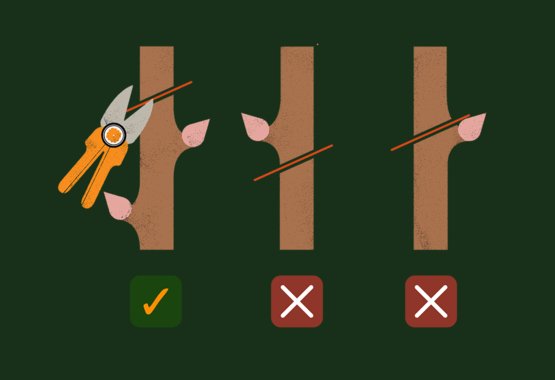
Shrubs that should be pruned later in the summer
If a shrub blooms early in the spring or summer (e.g. mock orange), its pruning should be postponed until after its blooming to avoid loss of flowers. Varieties that bloom late in the summer can be pruned normally in the spring, because such varieties will not form flowers until during the summer.
Note! Some shrubs (such as maple shrubs) bleed sap in the spring, which is why they must not be cut until later in the summer.
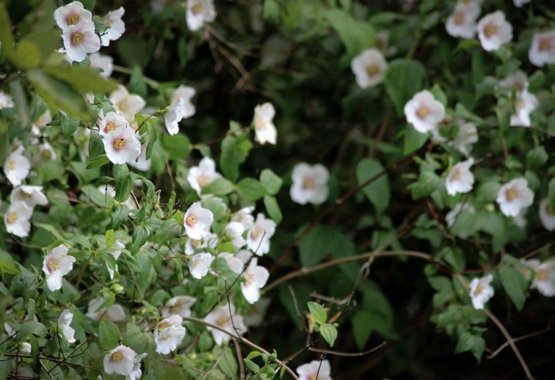
Cutting down is only suitable for easily renewable varieties
Cutting down (rejuvenation pruning) is an easy and effective way to invigorate a withered shrub, but it’s only suitable for easily renewable varieties. When cutting down, all the branches of a shrub are cut to a height of 10–20 cm early in the spring. The shrub will grow a lot of new shoots during the summer, and some varieties will bloom already in the following summer.
Note! Cutting down can be a good way to save a shrub that has been squashed by snow or that has withered otherwise.
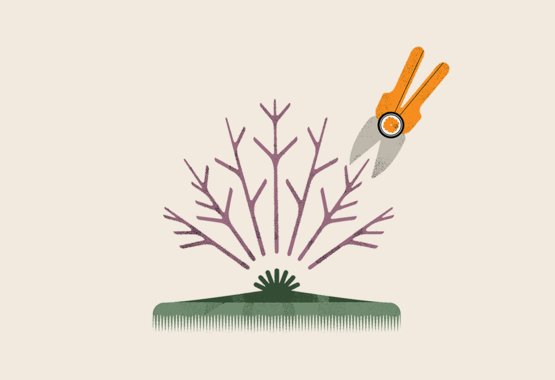
How and when to trim deciduous hedges
Deciduous hedges are pruned differently depending on if they are still growing or already at the desired height. When a hedge is growing, it needs to be pruned each spring. Pruning enables the hedge to become dense with good coverage.
Note! After pruning, the branches that have been cut off should be always shaken off from the hedge.
Deciduous hedges are often trimmed so that they become thinner upward
Too wide a hedge will not endure the weight of snow in the winter, and it also shadows the shoots in the lower part of the hedge. When you cut the shoots at the top little shorter than the shoots at the base, the hedge will gradually become A-shaped.
Note! Keep in mind that the top branches usually grow more than lower ones because they get more sunlight. The pruning of longer hedges can be made easier by stretching a piece of string at the desired height between two poles.
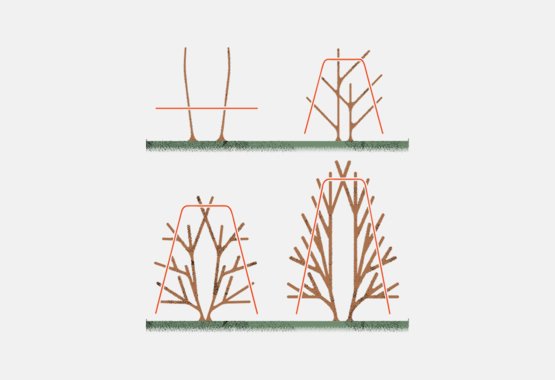
Pruning when the hedge has reached its desired height
- Should be done in the spring and summer.
- Tree-like parts are cut off in the spring before the buds break out. This is to ensure that the hedge continues to thrive.
- Late in the summer, the growth of the hedge is limited by pruning it once or twice more, depending on how strongly it grows.
- When pruning in the summer, around two centimeters of new growth is allowed to remain.
Pruning after planting
Pruning after planting is done to ensure that the sapling will begin to grow new branches and branches out well. If a potted sapling has five strong shoots that have grown new branches, pruning after planting is not necessary. Hedge saplings, which usually are bare-root saplings with only a single branch, need pruning in order to grow new branches.
Note! Pruning after planting is done in connection with the planting in the spring, before the buds begin to grow. If the plant is planted in the summer or fall, pruning is done the following spring.
